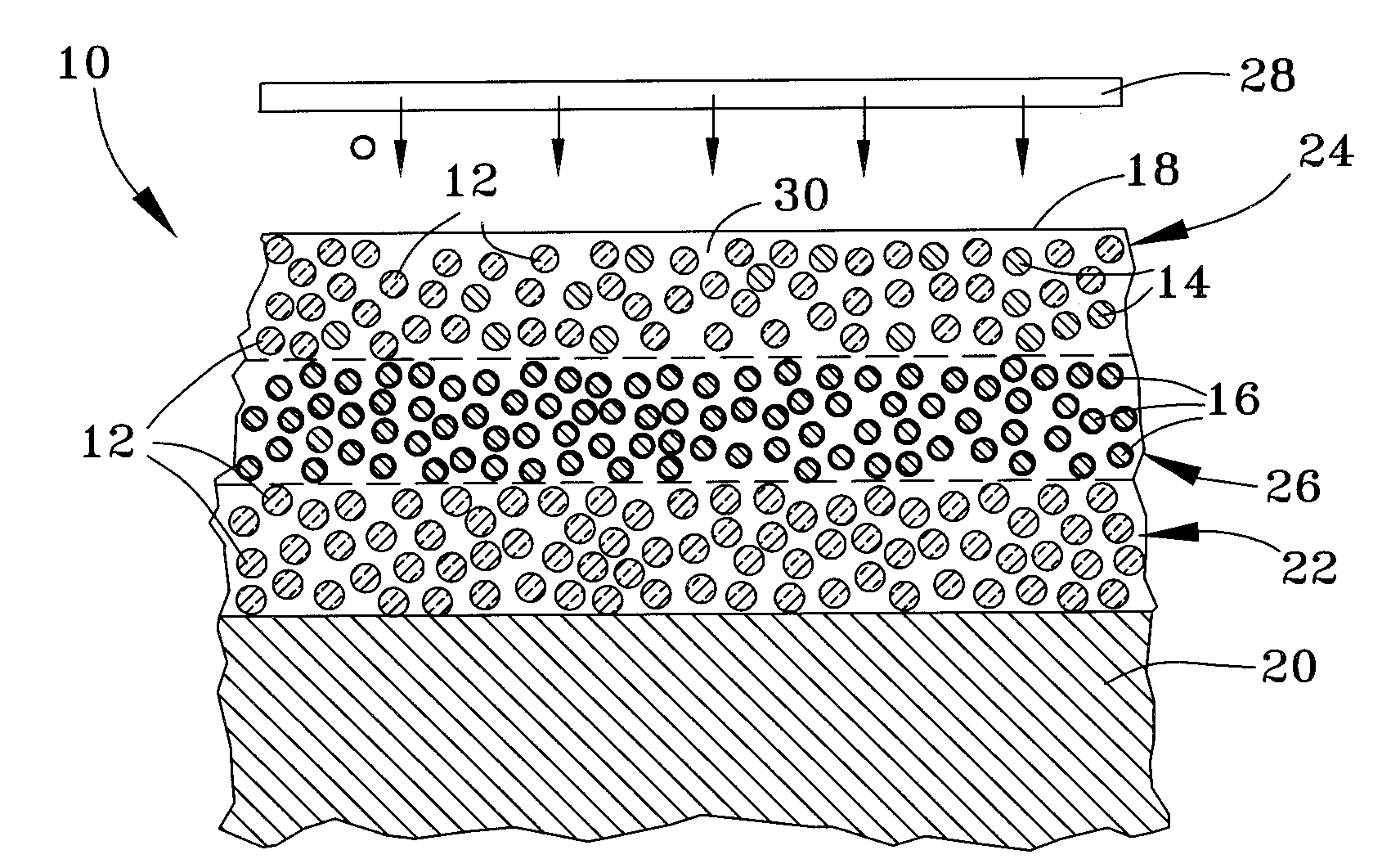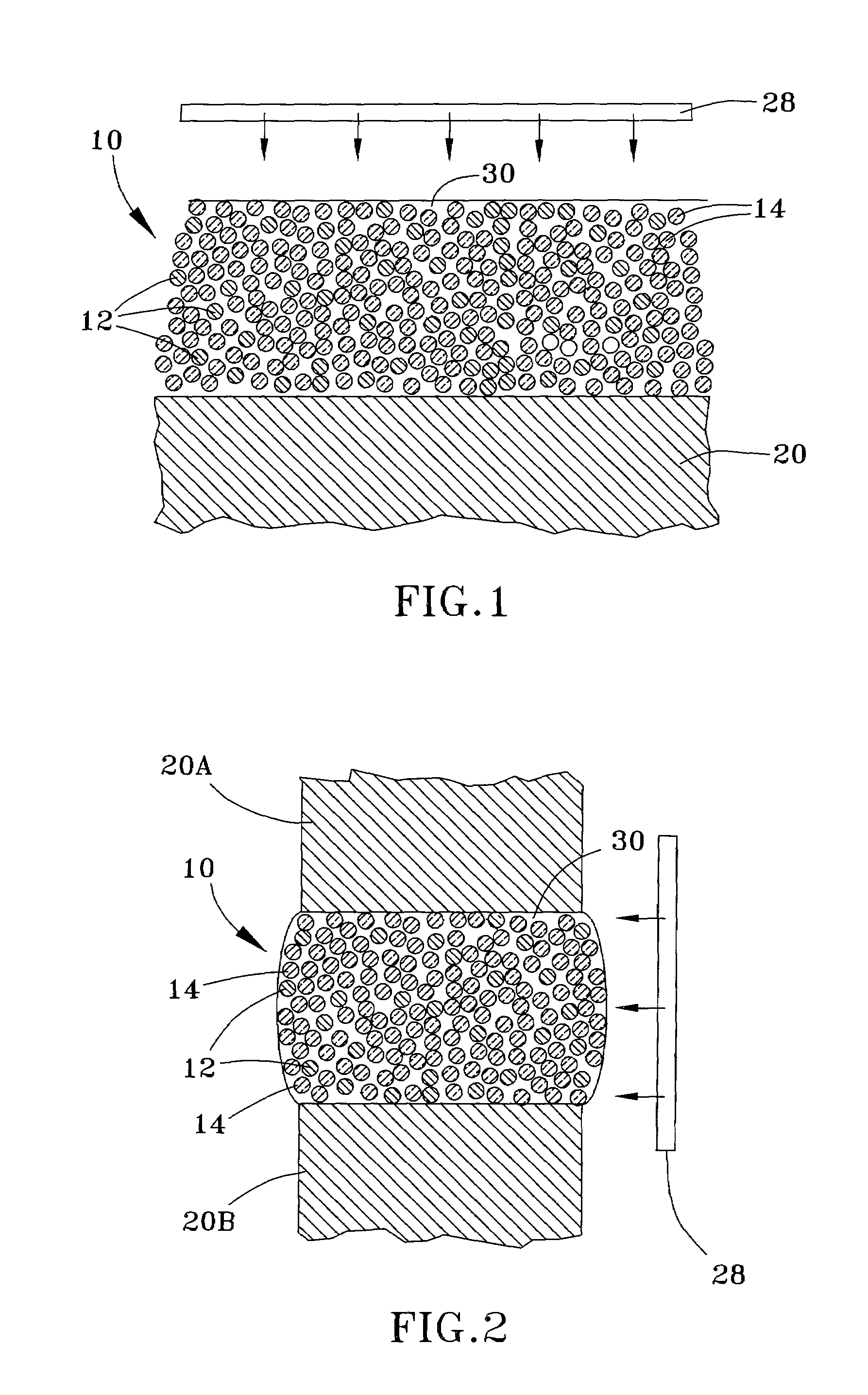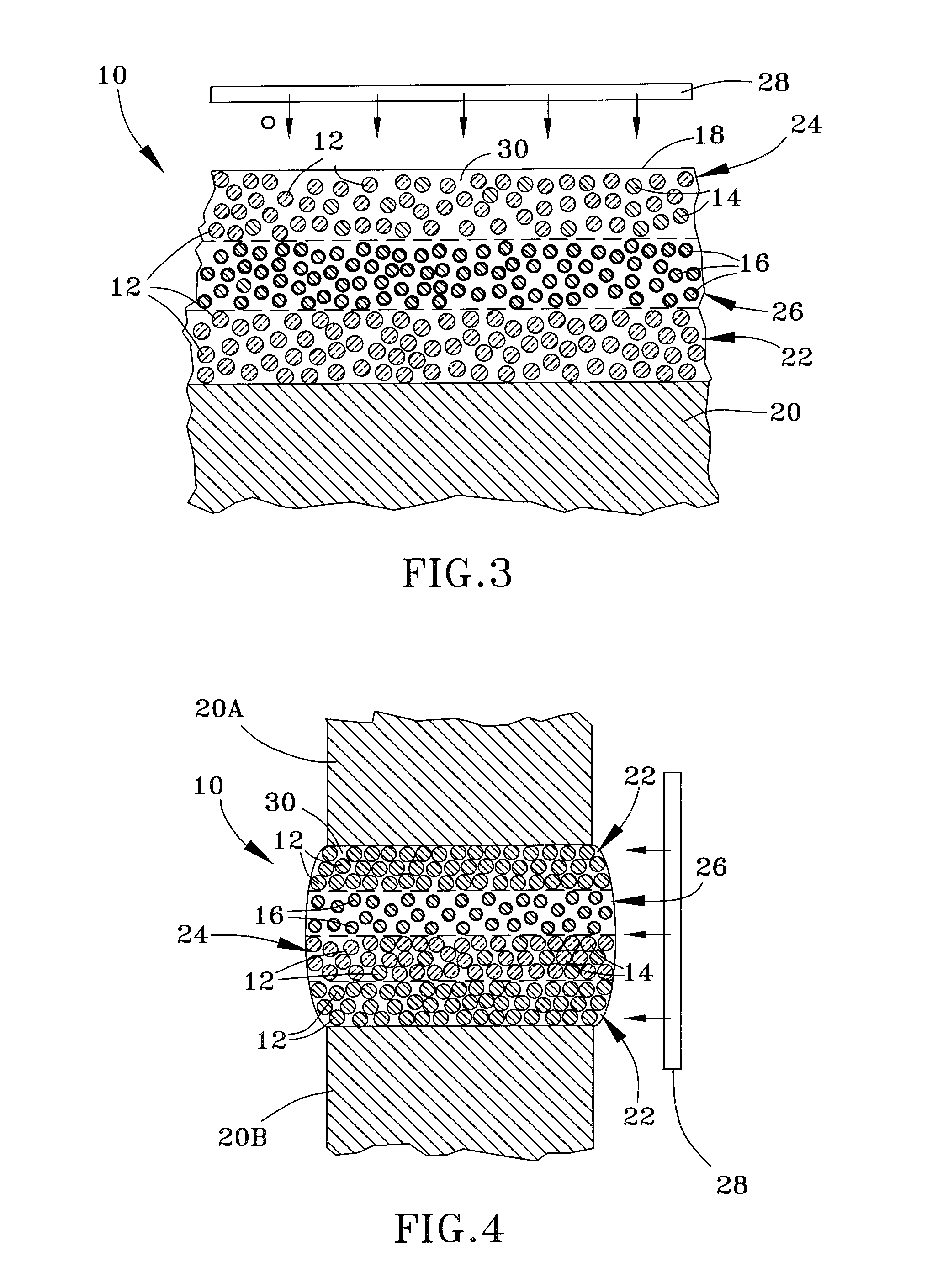Braze materials and processes therefor
a technology of brazing materials and processes, applied in the direction of manufacturing tools, cores/yokes, and so on, can solve the problems of insufficient manufacturing or repair process for some applications, the tendency of some melting point depressants to form embrittling phases, and the limited brazing temperature, etc., to achieve the desired mechanical properties, promote heating and melting, and promote the effect of heating
- Summary
- Abstract
- Description
- Claims
- Application Information
AI Technical Summary
Benefits of technology
Problems solved by technology
Method used
Image
Examples
Embodiment Construction
[0018]The invention will be described with reference to processing of components for gas turbine engines, and particularly the fabrication, coating, buildup, and repair of such components with a braze material. However, the invention has application to a variety of components, materials, and processes other than those discussed, and such variations are within the scope of this invention.
[0019]FIGS. 1 through 4 depict embodiments of this invention in which consistent reference numbers are used to identify functionally similar features. FIGS. 1 and 3 schematically represent a braze material 10 on a surface of a substrate 20 for the purpose of repairing, building-up or forming a coating on the substrate 20, and FIGS. 2 and 4 schematically represent a braze material 10 between and contacting opposing surfaces of two substrates 20A and 20B to be metallurgically joined by the braze material 10. In FIGS. 1 and 2, the braze material 10 is represented as containing particles 12 preferably fo...
PUM
| Property | Measurement | Unit |
|---|---|---|
| Percent by mass | aaaaa | aaaaa |
| Weight | aaaaa | aaaaa |
| Dispersion potential | aaaaa | aaaaa |
Abstract
Description
Claims
Application Information
 Login to View More
Login to View More - R&D
- Intellectual Property
- Life Sciences
- Materials
- Tech Scout
- Unparalleled Data Quality
- Higher Quality Content
- 60% Fewer Hallucinations
Browse by: Latest US Patents, China's latest patents, Technical Efficacy Thesaurus, Application Domain, Technology Topic, Popular Technical Reports.
© 2025 PatSnap. All rights reserved.Legal|Privacy policy|Modern Slavery Act Transparency Statement|Sitemap|About US| Contact US: help@patsnap.com



